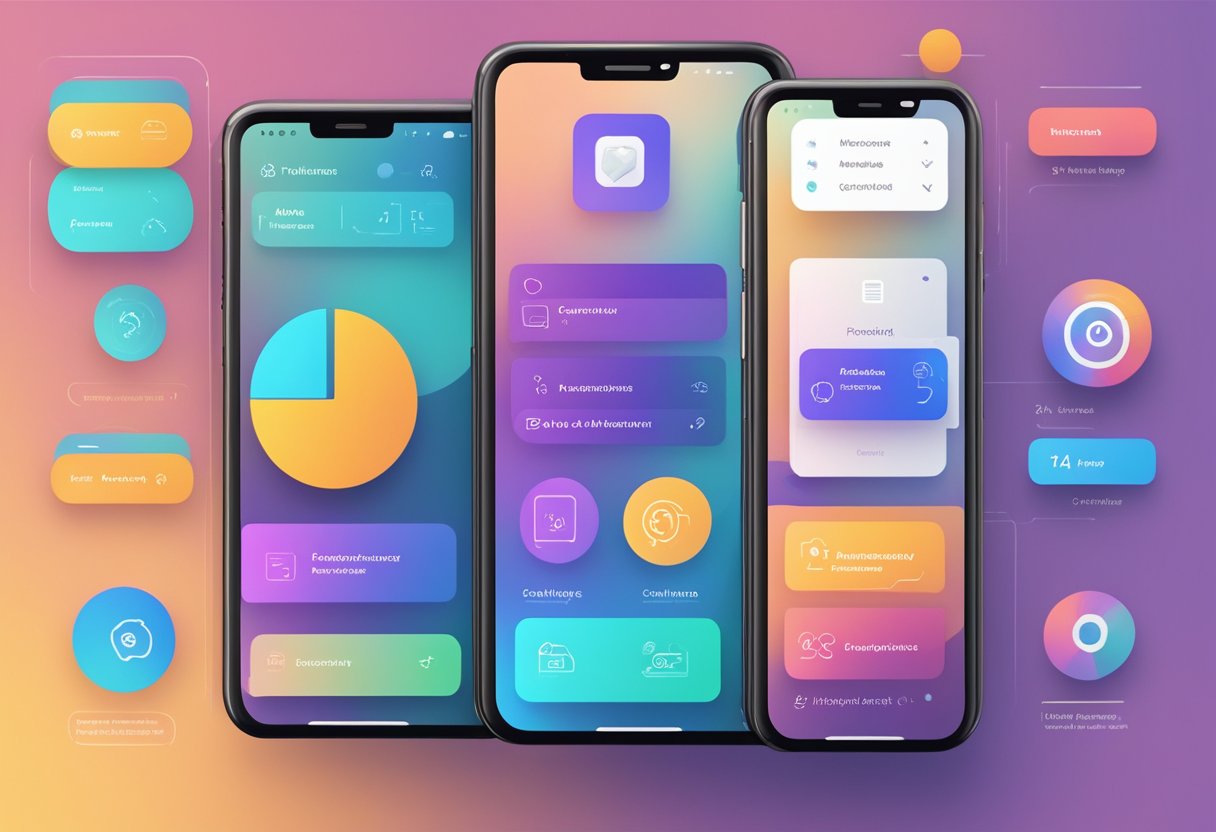React Native Elements is a UI toolkit for building mobile applications using React Native. It provides pre-built components that can be easily customized to fit the design needs of the application. These components include buttons, icons, forms, and many more.

One of the key benefits of using React Native Elements is the time-saving aspect of not having to build each component from scratch. This allows developers to focus on the core functionality of the application rather than spending time on designing and building UI components. Additionally, React Native Elements is highly customizable, allowing developers to easily modify the pre-built components to fit their specific design needs.
React Native Elements is also highly compatible with other popular libraries and frameworks, such as React Navigation and Redux. This makes it a popular choice among developers who want to use a combination of tools to build their mobile applications. Overall, React Native Elements is a powerful and efficient tool for building high-quality mobile applications using React Native.
Índice De Conteúdo
Getting Started
React Native Elements is a UI toolkit that enables developers to build cross-platform mobile applications with ease. In this section, we will cover the basic steps to get started with React Native Elements.
Installation
Before you can start using React Native Elements, you need to install it in your project. You can install it using npm or yarn, depending on your preference. Here’s how to install React Native Elements using npm:
npm install react-native-elements
Alternatively, you can use yarn to install it:
yarn add react-native-elements
Once you have installed React Native Elements, you can import it into your project and start using it.
Basic Usage
To use React Native Elements in your project, you need to import the components that you want to use. For example, if you want to use the Button component, you can import it like this:
import { Button } from 'react-native-elements';
After importing the component, you can use it in your code like any other React component. Here’s an example of how to use the Button component:
import React from 'react';
import { Button } from 'react-native-elements';
const MyButton = () => {
return (
<Button
title="My Button"
onPress={() => console.log('Button pressed')}
/>
);
};
export default MyButton;
In the above example, we have created a simple Button component that logs a message to the console when it is pressed. You can customize the appearance and behavior of the Button component by passing props to it.
That’s it! With these basic steps, you can start using React Native Elements in your project and build beautiful and functional mobile applications.
Core Components
React Native Elements is a popular library that provides a set of customizable and easy-to-use UI components for building mobile applications with React Native. The library offers a wide range of components, including buttons, icons, typography, and more.
Buttons
Buttons are an essential part of any mobile application, and React Native Elements provides a variety of customizable button styles and types. The library offers a range of button types, including solid, outline, and clear, that can be customized with different colors and sizes. Additionally, buttons can be styled with different text and icon combinations, making it easy to create unique and functional button designs.
Icons
Icons are a great way to add visual interest and enhance the user experience of a mobile application. React Native Elements provides a wide range of icons that can be easily customized and integrated into your application. The library includes popular icon sets like Material Icons, FontAwesome, and Ionicons, making it easy to find the right icon for your application.
Typography
Typography plays an important role in the design of any mobile application, and React Native Elements provides a range of customizable typography components. The library includes a variety of text styles, including headings, paragraphs, and captions, that can be customized with different fonts, sizes, and colors. Additionally, the library provides support for text alignment, line height, and letter spacing, making it easy to create visually appealing text designs.
In summary, React Native Elements offers a range of customizable and easy-to-use UI components that can help developers quickly build high-quality mobile applications with React Native. With a variety of components, including buttons, icons, and typography, React Native Elements provides a solid foundation for building mobile applications that are both functional and visually appealing.
Customization

React Native Elements provides a variety of customization options that allow developers to tailor their user interfaces to fit their specific needs. This section will cover two of the most important customization features: theming and style overriding.
Theming
React Native Elements is built with theming in mind, making it easy to customize the appearance of your app. The library comes with a default theme that can be easily overwritten with a custom theme. To create a custom theme, simply define a JavaScript object with the desired theme properties and pass it to the ThemeProvider component.
The theme object can include properties such as colors, fonts, button, icon, avatar, and more. Developers can customize the color scheme, typography, and other visual elements of their app by modifying these properties.
Overriding Styles
React Native Elements also allows developers to override the default styles of its components. This can be done by passing a style prop to the component with a custom style object.
For example, to change the background color of a Button component, a developer can pass a style prop with a backgroundColor property set to the desired color. This will override the default background color of the button.
In addition to overriding styles on individual components, developers can also create their own custom components by extending existing ones and modifying their styles. This can be done using the StyleSheet.create function and passing the modified styles to the extended component.
Overall, React Native Elements provides a variety of customization options that make it easy for developers to create beautiful and unique user interfaces for their apps. With theming and style overriding, developers can tailor their apps to fit their specific needs and create a cohesive and visually appealing user experience.
Advanced Topics

Performance Optimization
React Native Elements allows developers to optimize the performance of their mobile applications. One way to do this is by using the shouldComponentUpdate method to prevent unnecessary re-renders of components. This method allows developers to compare the current props and state of a component with the next props and state, and return a boolean value that determines whether the component should update or not.
Another way to optimize performance is by using the FlatList component instead of the ScrollView component for rendering long lists of data. The FlatList component only renders the items that are currently visible on the screen, which reduces the memory usage of the application.
Handling User Input
React Native Elements provides several components for handling user input, such as the Button and Input components. These components have built-in functionality for handling touch events and user input, making it easy to create interactive user interfaces.
In addition, React Native Elements also provides the Touchable component, which can be used to create custom touchable components. This component allows developers to define their own touchable area and behavior, which can be useful for creating complex user interfaces.
Overall, React Native Elements provides a wide range of advanced topics for developers to optimize the performance of their mobile applications and handle user input effectively. By using these features, developers can create high-quality mobile applications that provide a seamless user experience.

